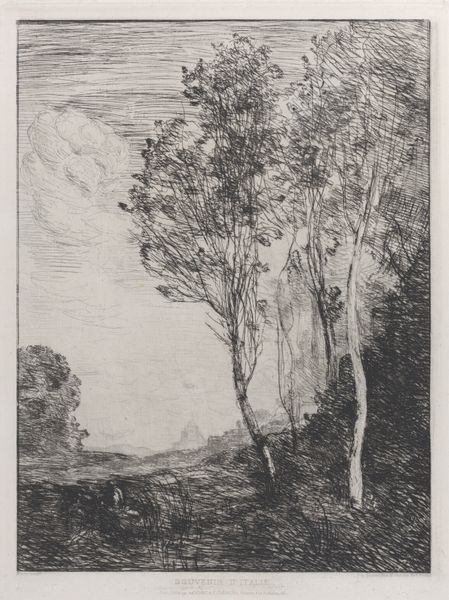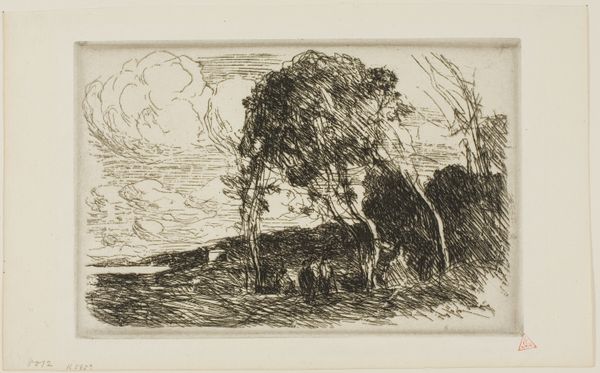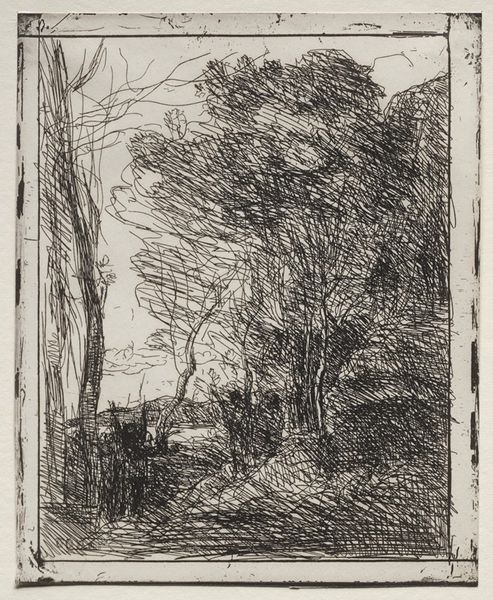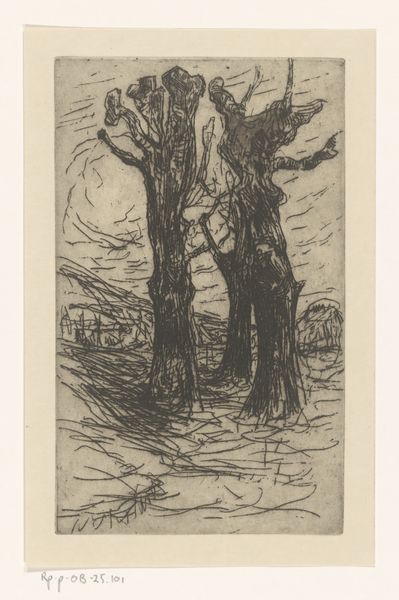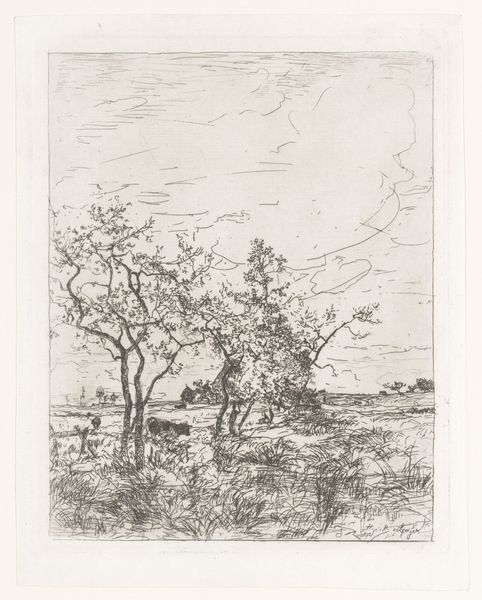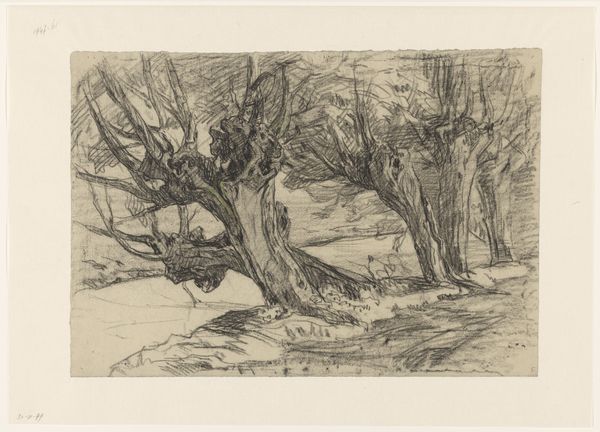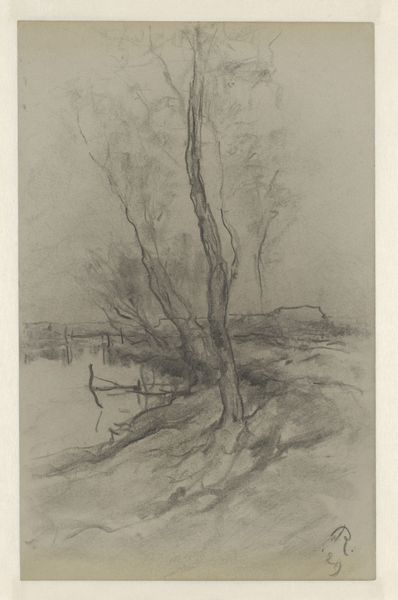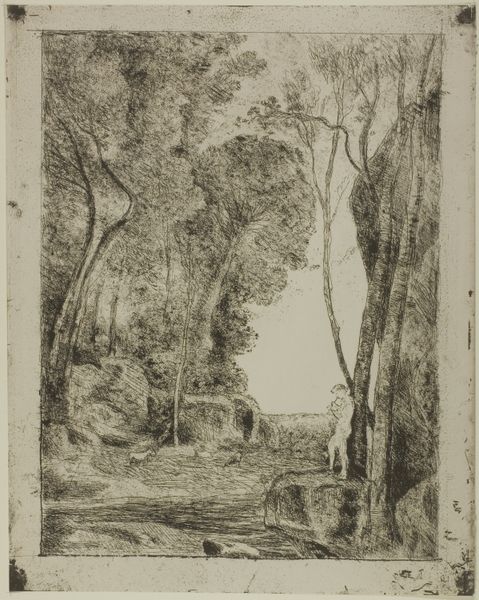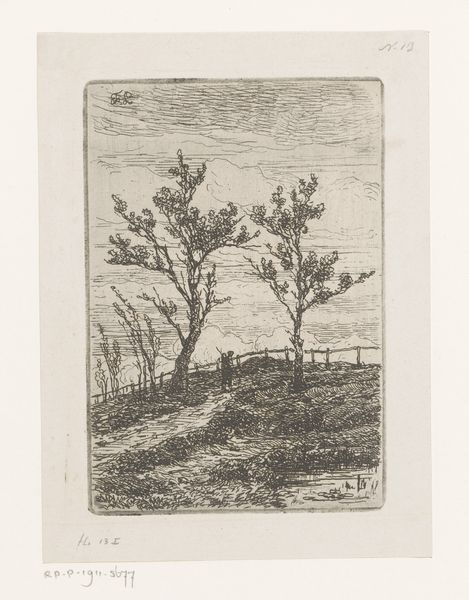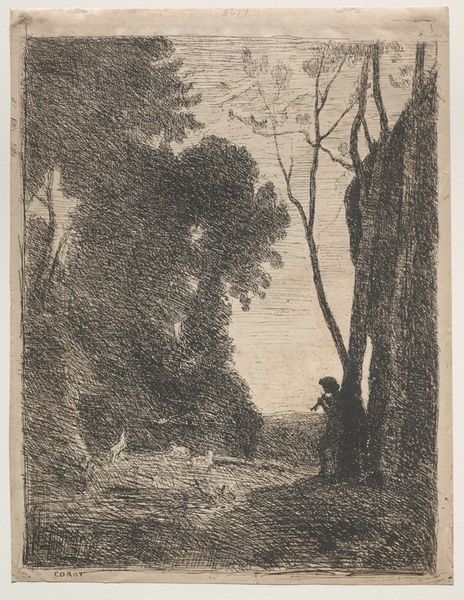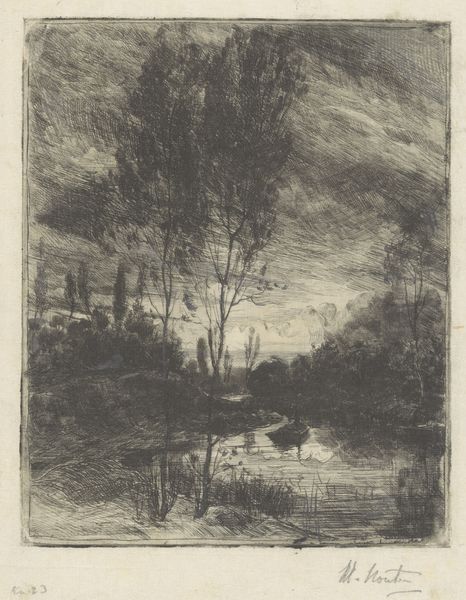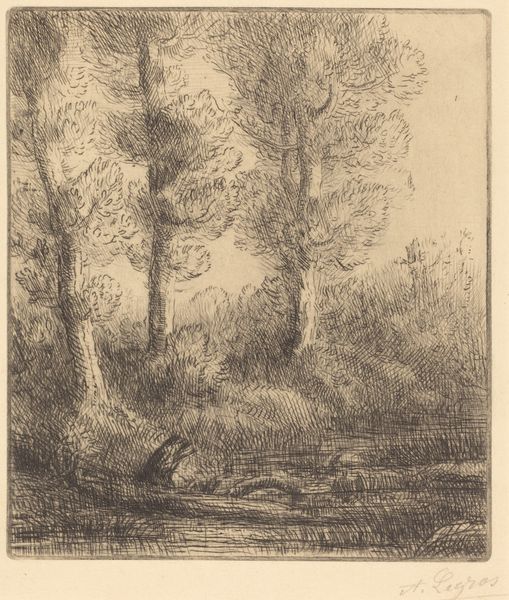
drawing, print, etching, paper
#
drawing
# print
#
etching
#
landscape
#
paper
Dimensions: 230 × 150 mm (image); 240 × 158 mm (plate); 312 × 195 mm (sheet)
Copyright: Public Domain
Curator: My breath kind of caught. It feels… wistful, like a memory half-formed. The scratchy lines give it this incredible sense of movement, even though it's just sitting still in front of me. Editor: We're looking at "The Florentine Duomo," an etching by Camille Corot from 1869 to 1870. The print resides here at The Art Institute of Chicago. Curator: "Etching" makes perfect sense; it does have this sort of sketched, ephemeral quality to it. I love the way the skeletal trees in the foreground almost act like a veil, softening the grand dome in the background. What's intriguing, isn't it, is how Corot focuses not on the architectural details, but on this dreamlike atmosphere. Editor: It's fascinating how Corot was associated with the Barbizon School. Here, in an Italian scene, we still see the sensibilities of landscape painting focusing on rural, everyday life instead of purely idealizing Italian architecture. The focus is redirected to a scene that incorporates architecture with a close interest in nature. We get a distinct sense of place while he moves from France to Italy. Curator: True! The trees *do* steal the show. They have so much texture to them, rough, like you could reach out and feel the bark under your fingertips, compared to the Duomo, which is fading away, hovering like it may vanish entirely into the soft focus. It gives me the feeling I often get visiting historic places–simultaneously there, in the present moment, while deeply conscious of the ever-flowing river of time, eroding our hold on even the most stalwart edifices. Editor: Precisely. And think about the function of art and art markets. This etching allowed for wider dissemination of Corot’s vision; to distribute that feeling beyond those who could visit Florence or acquire an original painting. It touches on a growing interest of the 19th century to collect art and a growing market for those prints as affordable collectibles. Curator: It becomes more of a collective experience, more stories building onto the structure in the image and etched on the page, right? A beautiful thought. Well, I know I’ll be thinking of how structures and time play when next in Italy. Editor: As will I! It's easy to think of landscape painting as this simple rendering of outdoor views. It brings another dimension to the conversation when you stop to think how something seemingly simple can be influenced and impacted by markets and accessibility.
Comments
No comments
Be the first to comment and join the conversation on the ultimate creative platform.
